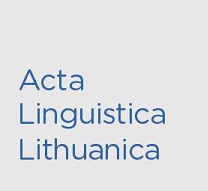Die Landkarte des Schlossgebietes Bērzaune vom 17. Jahrhundert und die baltische Hydronymie
The map of the castle area Bērzaune from the 17th century and the Baltic hydronymia
Author(s): Ojārs Bušs, Renāte Siliņa-PiņķeSubject(s): Theoretical Linguistics, Descriptive linguistics, Baltic Languages, 17th Century
Published by: Lietuvių Kalbos Institutas
Keywords: onomastics; hydronymy; 17th century; maps of castle districts; Livonia;
Summary/Abstract: The first ample collection of ancient toponyms of Latvia had been connected with economic activities in Sweden in the 17th century when the northern part of Latvia belonged to this country. Results of these activities are the materials of land revision, which represent a large number of Latvian oikonyms as well as surveying maps for the reduction of the estates that contain quite a lot of Latvian hydronyms and microtoponyms. The map of the Bērzaune castle district (apr. 1680–1685) contains more than 70 hydronyms. Their etymological research shows that most of them are names of Baltic (Latvian) origin, e.g., the river names Ackman ups (=*Akmeņupe), Roabesche ups (=*Robežupe). The lake name Plaxen Siö (now Plaksis or Plaksnis) is most likely to be treated as a name of onomatopoetic origin. The river name Plising Rivus could be derived from the Latvian stem plīs-/plēš- ‘to break, to tear’. The hydronyms derived from the stem Sav- (Savins ups, Sawitz Lacus, now Savīte, Savītes ezers), although seemingly compare with the Indo-European hydronyms originating from the root ide. *sh2eṷ- ‘to pour, to rain’, are most likely the names of Finno-Ugric origin, cf. Estonian sau, savi ‘clay’. Similar names with -ā- (now Sāvīte, Sāvienas ezers) are probably an etymon of the Latvian dialect word sāva ‘scar’.
Journal: Acta Linguistica Lithuanica
- Issue Year: 2015
- Issue No: 73
- Page Range: 101-116
- Page Count: 16
- Language: German

